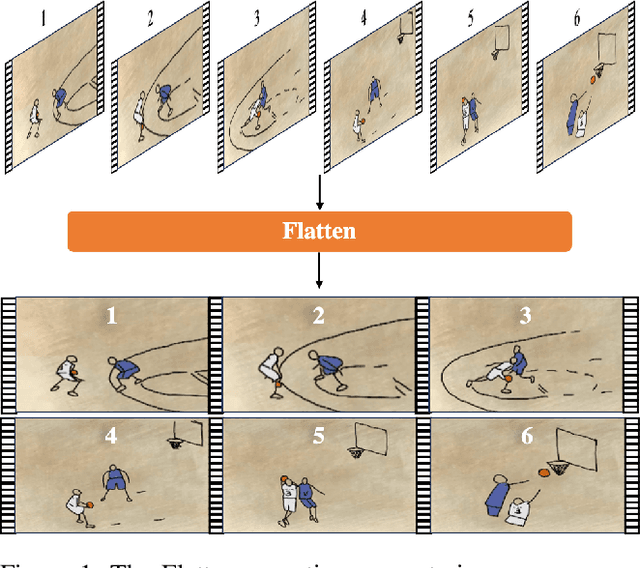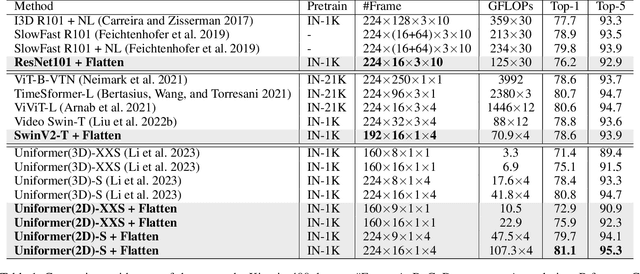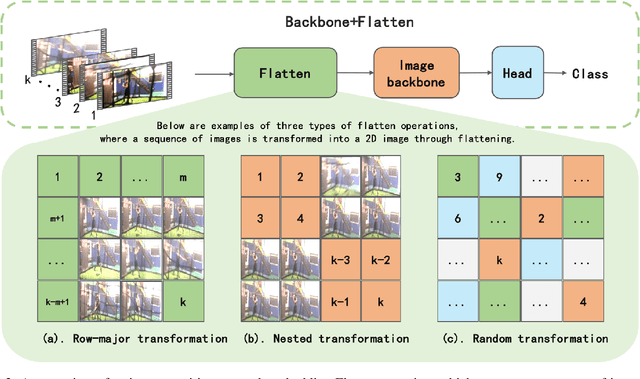Junlin Chen
Tuning-Free Long Video Generation via Global-Local Collaborative Diffusion
Jan 08, 2025



Abstract:Creating high-fidelity, coherent long videos is a sought-after aspiration. While recent video diffusion models have shown promising potential, they still grapple with spatiotemporal inconsistencies and high computational resource demands. We propose GLC-Diffusion, a tuning-free method for long video generation. It models the long video denoising process by establishing denoising trajectories through Global-Local Collaborative Denoising to ensure overall content consistency and temporal coherence between frames. Additionally, we introduce a Noise Reinitialization strategy which combines local noise shuffling with frequency fusion to improve global content consistency and visual diversity. Further, we propose a Video Motion Consistency Refinement (VMCR) module that computes the gradient of pixel-wise and frequency-wise losses to enhance visual consistency and temporal smoothness. Extensive experiments, including quantitative and qualitative evaluations on videos of varying lengths (\textit{e.g.}, 3\times and 6\times longer), demonstrate that our method effectively integrates with existing video diffusion models, producing coherent, high-fidelity long videos superior to previous approaches.
Flatten: Video Action Recognition is an Image Classification task
Aug 17, 2024



Abstract:In recent years, video action recognition, as a fundamental task in the field of video understanding, has been deeply explored by numerous researchers.Most traditional video action recognition methods typically involve converting videos into three-dimensional data that encapsulates both spatial and temporal information, subsequently leveraging prevalent image understanding models to model and analyze these data. However,these methods have significant drawbacks. Firstly, when delving into video action recognition tasks, image understanding models often need to be adapted accordingly in terms of model architecture and preprocessing for these spatiotemporal tasks; Secondly, dealing with high-dimensional data often poses greater challenges and incurs higher time costs compared to its lower-dimensional counterparts.To bridge the gap between image-understanding and video-understanding tasks while simplifying the complexity of video comprehension, we introduce a novel video representation architecture, Flatten, which serves as a plug-and-play module that can be seamlessly integrated into any image-understanding network for efficient and effective 3D temporal data modeling.Specifically, by applying specific flattening operations (e.g., row-major transform), 3D spatiotemporal data is transformed into 2D spatial information, and then ordinary image understanding models are used to capture temporal dynamic and spatial semantic information, which in turn accomplishes effective and efficient video action recognition. Extensive experiments on commonly used datasets (Kinetics-400, Something-Something v2, and HMDB-51) and three classical image classification models (Uniformer, SwinV2, and ResNet), have demonstrated that embedding Flatten provides a significant performance improvements over original model.
 Add to Chrome
Add to Chrome Add to Firefox
Add to Firefox Add to Edge
Add to Edge